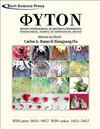气候对辽宁某草地地上植物生物量的影响比对物种多样性的影响更大
IF 1.2
4区 生物学
Q3 PLANT SCIENCES
Phyton-international Journal of Experimental Botany
Pub Date : 2016-06-22
DOI:10.32604/phyton.2016.85.125
引用次数: 2
摘要
本研究的目的是分析海拔高度、经纬度、年平均气温、年平均降水量和物种多样性与地上植物总生物量的关系。采用简单的线性回归分析来研究这些关系。结果表明,海拔高度与植物地上总生物量呈极显著正相关(R2= 0.038, P<0.01)。同时,随着经度(R2= 0.124, P<0.001)和纬度(R2= 0.221, P<0.001)的增加,地上总生物量减少。生物量与年平均降水量呈显著的正线性关系(R2= 0.149, P<0.001)。年平均气温与生物量呈显著负相关(R2= 0.145, P<0.001)。物种多样性与生物量的关系显著,但与气候变量的关系相对较弱(R2<0.063, P<0.05)。也就是说,物种多样性对地上植物生物量总变异的解释不足7%。这一结果与物种多样性变化时生态系统功能发生变化的特质响应假说一致,但由于单个植物物种的作用是复杂多变的,因此这些变化的幅度和方向是不可预测的。本文章由计算机程序翻译,如有差异,请以英文原文为准。
Total aboveground plant biomass is more strongly affected by climate than species diversity on a grassland in Liaoning, China
The objective of this study was to analyze the relationshipsbetween total aboveground plant biomass versus altitude, latitude,longitude, mean annual temperature, mean annual precipitation,and species diversity. Simple linear regression analysis was usedto study these relationships. Results showed that altitude was significantly,positively (R2= 0.038, P<0.01) related with total plant abovegroundbiomass. Meanwhile, when longitude (R2= 0.124, P<0.001)and latitude (R2= 0.221, P<0.001) increased, total aboveground biomassdecreased. The relationship between biomass and mean annualprecipitation was significantly, positively linear (R2= 0.149, P<0.001).Mean annual temperature was significantly, negatively correlatedwith biomass (R2= 0.145, P<0.001). The relationship between speciesdiversity and biomass was significant, but relatively weaker (i.e.,R2<0.063, P<0.05) compared with those for the climatic variables.This is, species diversity explained less than 7% of the total variabilityin total aboveground plant biomass. This result agrees with theidiosyncratic response hypothesis which suggests that ecosystem functionchanges when species diversity changes, but the magnitude anddirection of these changes are unpredictable because the roles of individualplant species are complex and varied.
求助全文
通过发布文献求助,成功后即可免费获取论文全文。
去求助
来源期刊
CiteScore
1.90
自引率
11.80%
发文量
17
审稿时长
12 months
期刊介绍:
Phyton-International Journal of Experimental Botany is an international journal that publishes on the broadest aspects of plant biology and ecology. The journal welcomes the original and exciting submissions that provide new and fundamental insights into the origins, development, and function of plants from the molecular to the whole organism and its interactions within the biotic and abiotic environment. Phyton-International Journal of Experimental Botany publishes outstanding research in the plant and ecology sciences, especially in the areas of plant physiology and biochemistry, plant metabolism, plant ecology and evolution, as well as those making use of synthetic, modeling, bioinformatics, and -omics tools. Manuscripts submitted to this journal must not be under simultaneous consideration or have been published elsewhere, either in part or in whole.

 求助内容:
求助内容: 应助结果提醒方式:
应助结果提醒方式:


